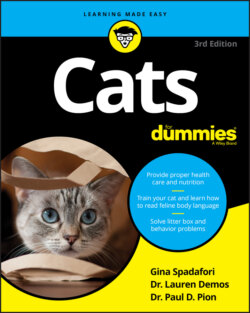Читать книгу Cats For Dummies - Gina Spadafori - Страница 34
Something different
ОглавлениеNew cat breeds are created all the time, some by accident, some by design. Many cat breeds start after someone notices a kitten with something “different” — ears, legs, or other characteristics that set him or her apart from other cats. These cats, shown in Figure 2-6, are some of the rarest around and among the most controversial. They’re also among the most expensive to acquire — if you can find one at all.
© John Wiley & Sons, Inc.
FIGURE 2-6: The short-legged Munchkin, short-tailed Japanese bobtail, ear-altered Scottish fold, and nearly hairless Sphynx are all certain to start a conversation.
Coat — or lack of it — sets some breeds apart. Primary among these breeds is the Sphynx, a cat who’s nearly hairless — nothing more than a little fuzz on his face, feet, and tail. The Rex breeds — Cornish, Devon, German, and Selkirk — all sport kinky hair, as does the LaPerm and the American Wirehair.
Some breeders of Rexes claim an additional distinction for their breeds: They claim that the cats are hypoallergenic. Some people with allergies may be able to tolerate certain breeds more than others, true, but unfortunately, no such thing as a completely allergy-proof cat exists.
Tails — or lack thereof — are the talk in other breeds. The Manx is undoubtedly the best-known tailless or short-tailed cat, but others are on this list, too. The Cymric is a longhaired Manx; the Japanese Bobtail, American Bobtail, and Pixie-Bob round out the ranks of the tail-challenged.
And what about ears? Two breeds are based on an ear mutation: the Scottish Fold, with ears that fold forward, and the American Curl, with ears that arch backward.
Undoubtedly the most talked-about new breed has been the Munchkin, a cat with short legs. Although some people say that the breed is a mutation that shouldn’t be developed into an actual breed, others see little difference between having a short-legged cat breed and a short-legged dog breed, of which several exist. One thing is certain: The controversy over breeds developed from mutations isn’t about to abate anytime soon.
Should you consider any of these breeds? Of course. If you’re looking for something that’s sure to start a conversation whenever company comes over, these cats are just the ticket. But be prepared, too, to hear from those who think it’s a bad idea to perpetuate such genetic surprises.
